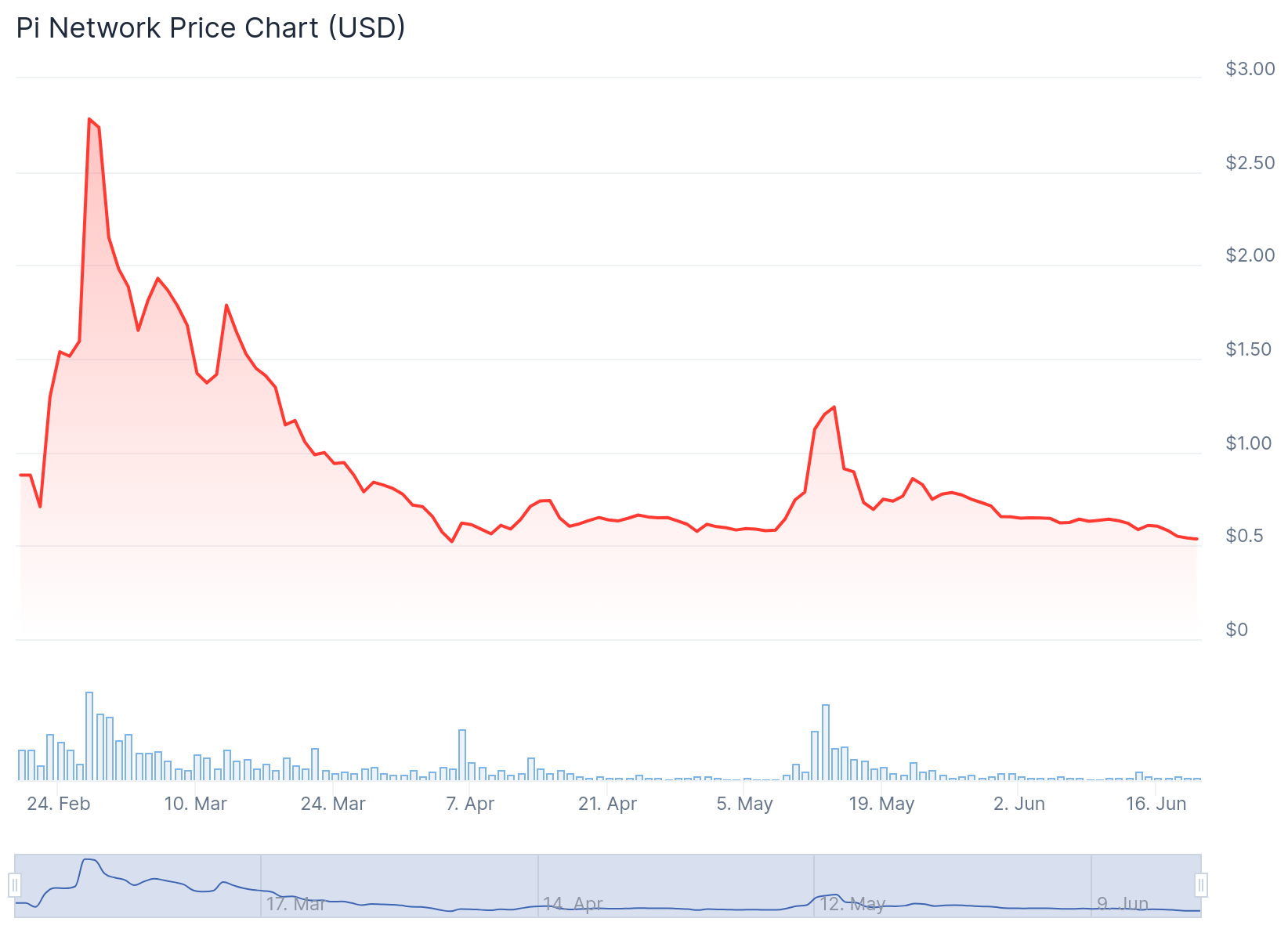PI-Network becomes more customer-friendly with a uniform KYC procedure

- PI Network introduces a Kyc synchronization tool to fix migration delays, wallet errors and 2FA problems by June 28th.
- Despite new KYC updates, users still have problems with verification, wallet credit errors and missing 2FA confirmations.
PI Network has introduced a new synchronization function to simplify the KYC process before the upcoming PI2Day on June 28th. The update fixes stubborn problems in which the KYC status of the users in the Piapp and in the Pibrowser was not displayed correctly.
Users who have so far stuck in “preliminary permits” or endless KYC loops can now see improved results. The credibility of the project willHowever, due to persistent technical problems such as 2FA errors and discrepancies in the wallet balance also questioned.
New KYC synchronization function comes before the Pi2day
In advance of the Pi2day 2025 Has Pi Network introduced a new function that enables users to synchronize their KYC status via the two main interfaces-Piapp and Pibrowser. As from community members X reported the new “Synchronize Status on Mining App” button connects the KYC results from the KYC app directly to the mining app.
The function is aimed at users who have passed KYC but still see an incomplete status on their mining dashboard:
“If your Kyc Status is displayed in the KYC app as ‘Kyc Passed’, but your mining app does not reflect this, use this button to synchronize the status.”
The synchronization function helps to remedy technical inconsistencies, in particular the persistent status “preliminary approval”, which made it impossible to continue with the Mainnet migration.
The update comes at a time when the frustration of the user due to Kyc verification that has been stuck, especially since the next wave of migration is closer. Reports on endless verification loops and a lack of support solutions are widespread.
Users with valid documents are often asked to upload their data again, even if they have passed the previous exams. Pi Network has not yet delivered a specific schedule for a solution or a technical explanation.
Technical errors undermine 2fa and wallet transfers
In addition to the KYC synchronization problems, users also have major problems with two-factor authentication (2FA). As reported, hat The 2FA process, the To protect token transfers was introducedled to far -reaching disorders.
Many users report that they do not receive verification emails or incorrect links that lead to expired meetings or error messages. In some cases, the 2FA conclusion triggers a reset that returns the tokens to the mobile app and forces a repetition of the entire migration. A user wrote:
“My PI returned to the app after completing 2FA. I have already added the email address twice, but nothing has changed.”
There is no official guidance for these problems, and the help documentation is missing a solution that goes beyond general steps such as “Empaling Cache” or “updating the app” a new installation or changing the device has led to mixed results.
The 2FA introduction is described as gradual, but the users have no idea what that means. The lack of error treatment and support communication still worsens the problem.
Another big problem is mistakes in synchronizing the wallets. Users find that their PI-Münzweltkfart after migration disappears or stays to zero, even if they have processed all the points in the checklist. Some credit is displayed and then disappear before the transmission is complete.
For others, the wallet crashes in the PI browser, and data loss and a faulty transaction course occur. This raises questions about backend synchronization and frontend ganzengeflär.
Trust decreases in migration chaos and because of disappearing tokens
The PI Network Under the microscope. Despite the introduction of the KYC synchronization function, this is plagued Ecosystemstill bigger problems .
Users who have filled out the 5-stage Mainnet checklist (wallet device, token lock, 2FA, confirmation signature) still encounter roadblocks due to system errors.
Many are frustrated by the lack of transparency on the part of the Pi Core Teams. There is no published roadmap to remedy the problems, and the latest app updates have not fixed the basic technical problems. Some User In China, improvements could be found after a compliance video update, but other users in other regions of the world are still stuck in the migration hell.
The community is too worried About financial matters. Some believe that the funds in the wallets are managed by insiders, especially after a wallet (with the ending “ODM”) attracted attention with over 276 million PI coins. Since the PI course compared to the highest level of 78 % from the beginning of 2025, migration errors and the fear of loss of token undermine trust.
Fraudsters also take advantage of the confusion. Fake Kyc reset services and phishing links are sent to users who have not received their tokens. Since more than 100 PI Network-based apps have been developed, but only a few were publicly introduced, the gap between the expectations of the users and the implementation is increasing.

In mid -June 2025, Pi Coin is traded at $ 0.5371, with a decline of 2.90 %, despite an increase in the trading volume by 5 % to $ 93.59 million. The PI Core Team confirmed the existing errors and asked the users to check their checklist, verify 2FA, update to 1.41.0 and delete the app cache. However, the lack of technical transparency, published corrections or responsibility for support has aroused further doubts.





No Comments